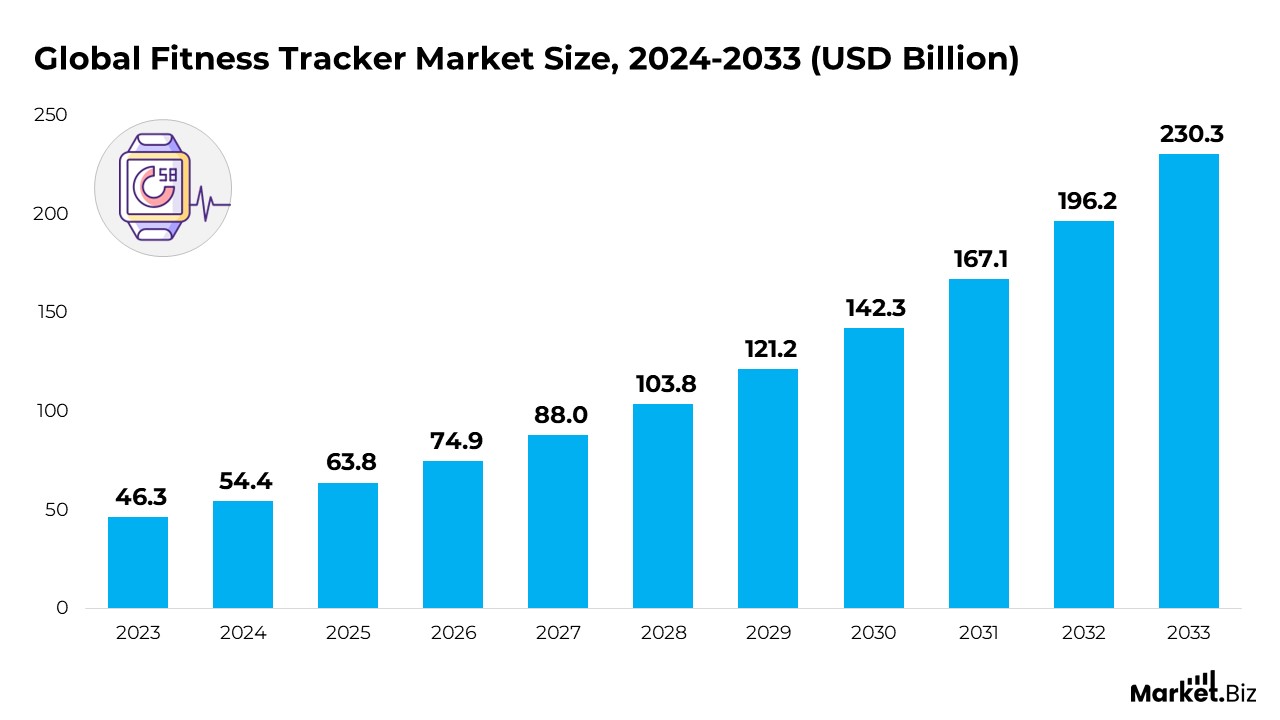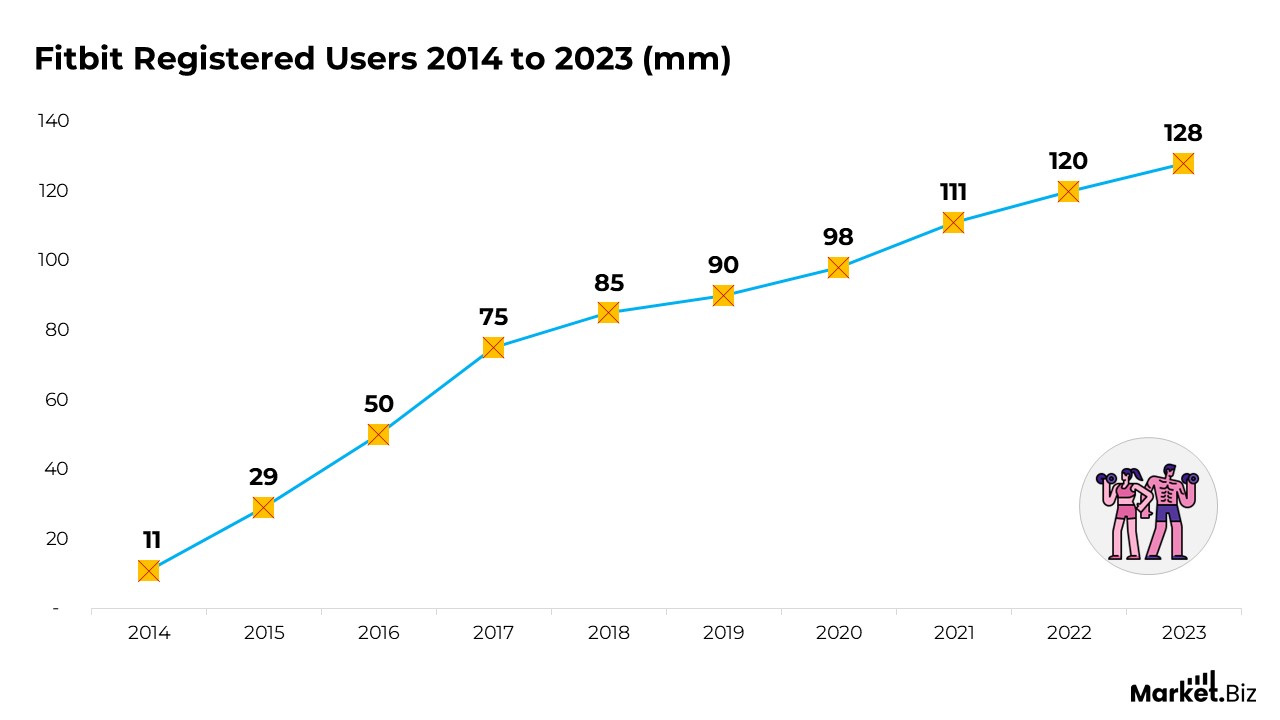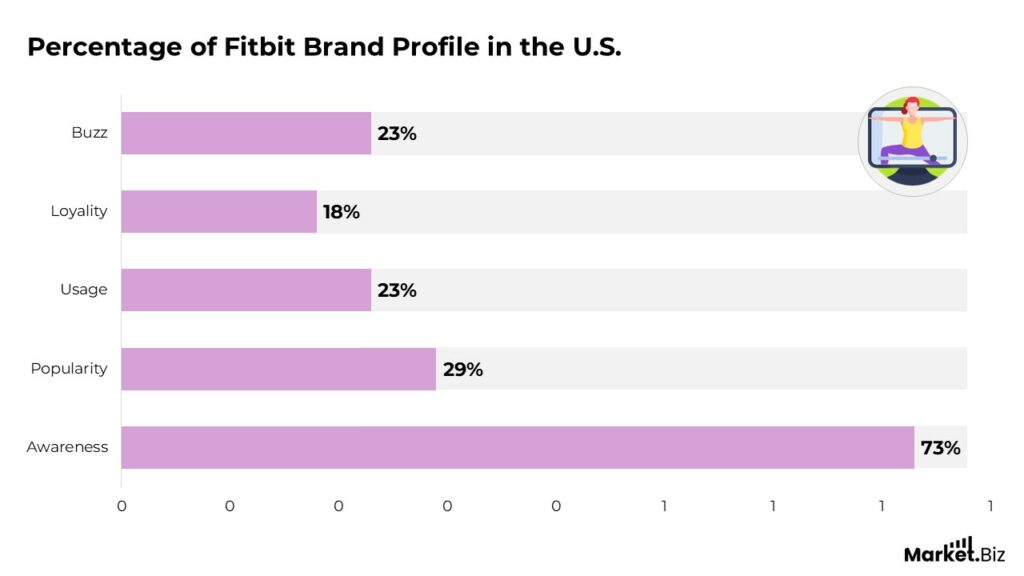Introduction
Fitbit Usage Statistics: Fitbit, a prominent player in the wearable fitness technology market, has long been a valuable source of insights into user behavior and health trends. In recent years, Fitbit’s devices have played a crucial role in helping millions of users track their physical activity, heart rate, and overall wellness.
Fitbit continues to offer a diverse array of health-focused features designed to support fitness and overall well-being. Key metrics, such as steps taken and minutes of moderate to vigorous activity, highlight the changing dynamics of personal health tracking. This overview of Fitbit usage statistics highlights significant patterns in user engagement, emerging health trends, and the broader impact of wearable technology on daily life.
Editor’s Choice
- In January 2021, Google acquired Fitbit for $2.1 billion to develop innovative devices and services that aim to improve users’ health, success, knowledge, and overall well-being.
- In 2023, Fitbit sold 6.6 million units, reflecting a 28% decline compared to 2022.
- Fitbit generated an estimated $1 billion in revenue in 2023, marking a 10% decrease from the previous year, 2022.
- In 2021, Fitbit users engaged in an average of 150 minutes of moderate to vigorous physical activity per week.
- The average resting heart rate for Fitbit users in 2021 ranged between 60 and 70 beats per minute.
- Fitbit users took an average of 7,500 steps daily in 2021, with variations influenced by age and gender.
- In 2022, 2 million Fitbit users enrolled in the device’s AFib detection feature.
- Fitbit ranked as the sixth most popular wearable brand in the UK.
- In 2021, Fitbit users in the United States collectively walked a total of 47 trillion steps.
Global Fitness App Market Size

- According to Market.us, the global fitness app market is projected to grow from $7.0 billion in 2025 to $22.0 billion by 2032, representing a compound annual growth rate (CAGR) of 18% from 2024 to 2033.
- The growth of the fitness app market is driven by increasing awareness of healthy lifestyles, the rise of smartphone use, the adoption of wearable devices, and the prevalence of diet-related diseases.
- In 2023, the exercise and weight loss segment accounted for over 54.8% of the market share, with apps offering fitness-tracking tools and motivational features, such as scheduled notifications and video demos.
- In 2023, iOS held a 62.4% market share, with Apple users increasingly active, utilizing popular fitness apps such as Centr, MyFitnessPal, Sworkit, and Freeletics.
- The smartphone market accounted for 53.4% of the revenue share, driven by global smartphone expansion and a shift from gym visits to home workouts via fitness apps.
- North America dominated the market in 2023, capturing 49.1% market share and a USD 2.4 billion value, fueled by high smartphone adoption and a strong fitness culture.
(Source: Market.us)
Global Fitness Tracker Market Size

- According to Market.us, the global fitness tracker market is projected to grow from $63.8 billion in 2025 to $196.2 billion by 2032, representing a compound annual growth rate (CAGR) of 17.4% from 2024 to 2033.
- The focus on personal health monitoring, smart technologies, and the rising prevalence of lifestyle diseases drives the growth of the fitness app market.
- In 2023, smartwatches led the fitness tracker market with a 49.3% share, followed by smart bands at 29.1%, while smart clothing and others accounted for 12.6% and 9.0%, respectively.
- In 2023, running tracking dominated the fitness tracker market with a 23.5% share, while heart rate tracking and sleep monitoring captured 21.2% and 20.3%, respectively.
- Online channels accounted for 65.2% of the fitness tracker market in 2023, driven by convenience, product variety, competitive pricing, and superior customer experience.
- North America led the fitness tracker market in 2023, with a 43.2% share and a market value of USD 20.0 billion, supported by high consumer health awareness and advanced technological infrastructure.
(Source: Market.us)
General Fitbit Statistics
- In 2023, the Fitbit fitness tracker app surpassed 50 million downloads on the Google Play Store.
- The number of active Fitbit users grew steadily from 2012 to 2023, with 38.5 million active users in 2023, a slight decline from 40 million the previous year.
- Smartwatch and fitness tracker shipments are expected to reach approximately 524 million units in 2024, driven by increasing demand.
- Fitbit lost its leadership in the wearable market to a tech giant, now controlling over 20% of the market.
- As of September 2023, the Fitbit Sense 2 was the most expensive device at nearly $300, followed by the Fitbit Versa 4 and Fitbit Luxe, both priced at around $200.
- 72.87% of Fitbit users monitor their heart rate during exercise.
- 65% of Fitbit users utilize the device to set personal goals, track progress, and receive motivational notifications.
- Fitbit enjoys a high level of brand awareness, with 73% of U.S. wearable users recognizing it.
- The number of registered Fitbit users grew steadily from 2014 to 2023. In 2023, Fitbit reached approximately 128 million registered users, marking an increase of eight million compared to the previous year.
(Source: Fitbit, Statista)
Why Users Choose Fitbit for Their Fitness Journey?
- Around 65% of Fitbit users make use of the device to set personal goals, track their progress, and receive motivational reminders to stay engaged in their fitness journey.
- According to Fitbit statistics, approximately 96.10% of users prefer using their Fitbit devices for accurate tracking of daily activities, including step counts, distance travelled, and calories burned, highlighting its role in promoting an active lifestyle.
- Around 96.10% of users prefer using their Fitbit devices for accurate tracking of daily activities, including step counts, distance travelled, and calories burned, emphasizing its role in promoting an active lifestyle.
- Approximately 96.10% of users prefer using their Fitbit devices for accurate tracking of daily activities, including step counts, distance travelled, and calories burned, emphasizing its role in promoting an active lifestyle.
(Source: Fitbit Internal Data)
Demographics of Fitbit Usage
Age
The demographic profile of Fitbit users is diverse, with various age groups making up significant portions of the user base:
Young Adults (18-24 years old):
- Approximately 15.79% of Fitbit users fall within the 18-24 age range, indicating the device’s appeal to younger individuals starting their fitness journey.
Early Career Professionals (25-34 years old):
- The 25-34 age group accounts for 25.93% of Fitbit users, representing a key demographic that prioritizes maintaining an active lifestyle.
Middle-Aged Adults (35-44 years old):
- Fitbit users aged 35-44 comprise 19.40% of the total, indicating a heightened awareness of health and fitness as individuals in this age group focus on long-term wellness.
Older Adults (45-54 years old):
- Approximately 16.08% of Fitbit users are aged 45-54, with this group increasingly adopting fitness trackers to monitor and enhance their health.
- The 55-64 age group makes up 12.94% of Fitbit users, highlighting the growing interest in health monitoring as people approach retirement age.
- Users aged 65 and above account for 9.87% of Fitbit’s user base, demonstrating a rising trend among older adults to incorporate fitness and wellness tools into their daily routines.
(Source: Coolest Gadgets, Sci-tech, Similarweb )
Gender

Monthly Active Fitbit Users
| Year | Users from 2014 to 2023 (mm) |
|---|---|
| 2014 | 6.7 |
| 2015 | 14.9 |
| 2016 | 23.6 |
| 2016 | 23.6 |
| 2017 | 29 |
| 2018 | 33.8 |
| 2019 | 38.3 |
| 2020 | 40.2 |
| 2021 | 41.5 |
| 2022 | 40 |
| 2023 | 38.5 |
(Source: Statista, Business of Apps)
Number of Fitbit Devices Sold Globally
| Year | Number of Fitbit Devices Sold (1,000s) |
|---|---|
| 2021 | 10,600 |
| 2022 | 9,200 |
| 2023 | 6,600 |
(Source: Statista)
Fitbit Registered Users (MM)

(Source: Statista, Business of Apps)
Fitbit Brand Profile

Key Competitors and Market Position Fitbit
- In 2022, the Apple Watch overtook Fitbit to become the top wearable device globally, capturing 29.7% of the market share, while Fitbit held a smaller 4.4% share.
- In the United States, Apple dominated the fitness tracker market in 2022, holding a 50% share, with Fitbit securing second place at 16%. Samsung trailed behind, controlling just 6% of the U.S. fitness tracker market.
- In 2020, Samsung ranked as the second-largest player in the global wearables market, with a 9.8% share, surpassing Fitbit in terms of market presence.
(Source: IDCCorporate).
Range of Fitbit Wearable Devices
Fitbit offers a diverse range of wearable devices designed to cater to various user preferences and needs:
- Fitbit Luxe: A stylish fitness and wellness tracker priced around $149.95, offering sleep tracking, heart rate monitoring, and stress management features.
- Fitbit Charge 5: A feature-rich fitness tracker equipped with built-in GPS, heart rate monitoring, stress management tools, and sleep tracking. Price: approximately $179.95.
- Fitbit Inspire 3: A budget-friendly fitness tracker offering essential health features, including heart rate monitoring and sleep tracking. Price: around $99.95. Fitbit Ace 3: A child-friendly activity tracker designed with features like activity tracking, sleep monitoring, and parental controls. Priced at around $79.95.
- Fitbit Versa 4: A smart wearable that combines advanced health and fitness tracking with built-in GPS, music control, and a voice assistant. Priced at about $229.95.
- Fitbit Sense 2: A quality health-focused smartwatch that includes advanced features like ECG, stress management, skin temperature monitoring, and built-in GPS. Price: approximately $299.95.
(Source: Sci-Tech-Today)
Fitbit’s Impact on Fitness and Health
- Users of Fitbit are 43% more likely to increase their physical activity levels.
- On average, Fitbit users walk 700 more steps per day than those who don’t use the device.
- Fitbit trackers have helped users achieve an additional 4.2 hours of active minutes per week.
- Fitbit users engage in 43% more minutes of moderate to vigorous physical activity each week compared to non-users.
- Those who set weight loss goals through the Fitbit app have successfully lost an average of 7.4% of their body weight.
- Users who consistently monitor their sleep with Fitbit report sleeping an average of 20 minutes longer each night.
- Fitbit wearers experience a 10% improvement in their resting heart rate on average.
(Source: Fitbit Research, Market.us)
Fitbit Usage – By Country
- Fitbit enjoys 83% brand awareness in the UK, with 39% of wearable device users expressing a liking for the brand. Among those familiar with Fitbit, 47% have a favorable view of it.
- In 2023, 28% of wearables users in the UK use Fitbit, and of the 83% who are aware of the brand, 34% actively use it.
- Around 22% of wearables users in the UK indicated they are likely to use Fitbit again. This translates to a strong brand loyalty of 79% among its users in 2023.
- In October 2023, 24% of UK wearables users reported encountering Fitbit through media, social media, or advertising in the past three months. This means 29% of those familiar with the brand had some recent exposure, indicating growing buzz around Fitbit in the UK.
- According to Fitbit statistics, the United States holds the largest share of Fitbit’s user base, accounting for 65.9% of visits to the Fitbit website. However, there has been a slight decrease of approximately 1.38% in total visitor share as of March 2024.
(Source: Statista, Fitbit Statista).
Upcoming and New Fitbit Launches
Fitbit is set to unveil several exciting products and updates:
- Fitbit Charge 6: The next iteration of the Charge series is expected to come with upgraded sensors, extended battery life, and enhanced features for more accurate health tracking.
- Fitbit Luxe 2: The follow-up to the Luxe offering additional wellness-focused features along with customizable fashion accessories for a more personalized experience.
- Software Enhancements: Regular firmware updates will be rolled out for existing devices, bringing improvements to functionality and new features, including better sleep tracking and advanced stress management tools.
- New Health Insights: Fitbit plans to introduce fresh health metrics powered by Google’s AI and machine learning to offer more tailored health recommendations and insights to users.
(Source: Sci-tech Today).
Recent Developments
Launches & Approvals
- In April 2022, Fitbit received approval from the U.S. FDA for its photoplethysmography-based algorithm, allowing its devices to detect atrial fibrillation in users.
- In April 2021, Fitbit launched the Luxe, a new fitness tracker that combines the brand’s classic health and wellness features with a sleek, jewellery-inspired design.
User Engagement:
- Fitbit has built a strong and active user community, with over 38.5 million users actively participating in a range of activities, such as joining challenges, tracking food and water intake, and monitoring their fitness progress.
- The brand’s effective user engagement strategies play a key role in maintaining its solid market presence and fostering high levels of brand loyalty.
Conclusion
Fitbit maintains a prominent position in the wearable technology market, benefiting from strong brand recognition and user engagement, particularly in regions such as the United States and the UK. Although it faces stiff competition from giants like Apple and Samsung, Fitbit’s ongoing innovation and wide range of features help retain a loyal customer base.
The brand’s focus on personalized health and fitness tracking, combined with its effective media presence and intuitive devices, makes it a popular choice among users. Despite some fluctuations in market share and a slight decline in user growth, Fitbit’s ability to maintain strong brand loyalty and expand its presence highlights its enduring impact in the wearable technology industry.
FAQ’s
Fitbit users commonly use features such as heart rate monitoring during workouts (72.87% of users), goal setting and progress tracking (65% of users), and sleep tracking (86% of users).
In 2023, around 79% of Fitbit users expressed loyalty to the brand, suggesting they are likely to continue using Fitbit based on their positive experiences with the device.
With a Fitbit, you can monitor the following:
Steps taken and distance travelled
Active minutes and calories burned
Heart rate
Sleep patterns and quality
Floors climbed (available on devices with altimeters)
Exercise-specific metrics (varies by model)
Female health tracking (available on select models)
Built-in GPS for tracking outdoor activities without needing a phone (available on certain models)
To connect your Fitbit device to your smartphone, start by downloading the Fitbit app from the App Store or Google Play Store. Once you sign in to your account, the app will guide you through the process of pairing your device with your phone.
